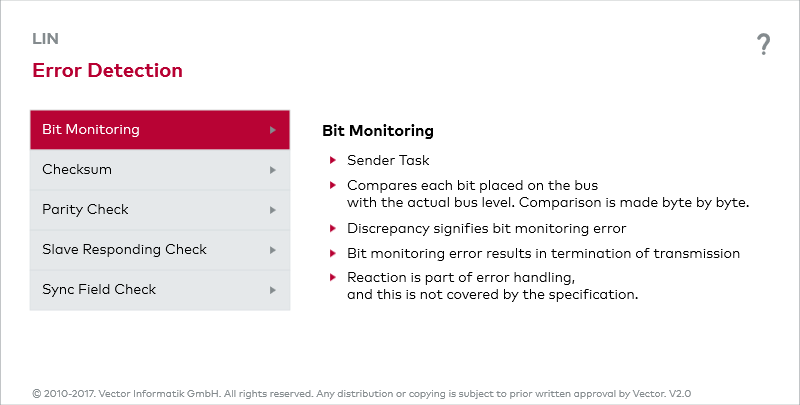Mechanisms
Data Integrity
Protection in data transmission is the prerequisite for the reliability of automotive electronic systems. Despite measures to achieve an electromagnetically compatible design, bit errors can still occur during transmission. To increase data integrity, error detection mechanisms are used, and effective error handling is necessary.
Error Handling
Various error detection mechanisms and a type of error signaling are defined in the framework of Status Management (see figure: Error Detection). However, no provisions are made here for error handling. Error handling must be defined and set up in the implementation.
Error Detection
The following error detection mechanisms are available:
- Checking of the transmission medium for short circuit,
- Checking of the Sync Field,
- Bit monitoring to check the signal levels,
- Detection of transmission errors by checking the parity bits sent in the Frame Header (Parity Check), and
- Detection of transmission errors by checking the checksum transmitted in the Frame Response (Checksum Check), and finally
- Checking whether a frame response was sent after a frame header (exception: Event Triggered Frame).
Status Management
Status Management serves to detect defective slaves. It must be assured that communications still operate properly despite any defective nodes. The master executes Status Management. The slaves must communicate their status once per communication cycle.
Statusbit
To communicate their status, each slave has its own status bit. This is transmitted once per sending cycle with an Unconditional Frame and is evaluated by the master. This bit is recessive if the slave has detected an error during the last communication cycle. If no error is present, the status bit is transmitted as dominant.

